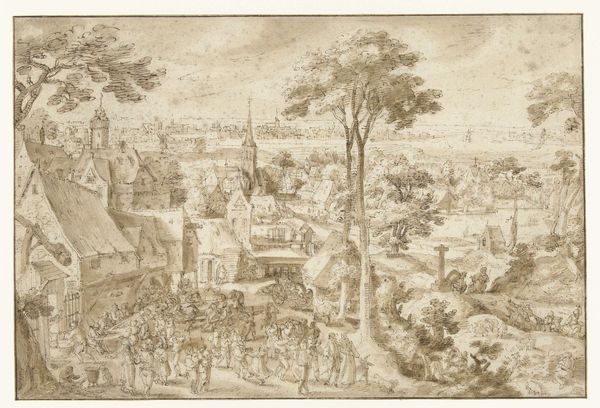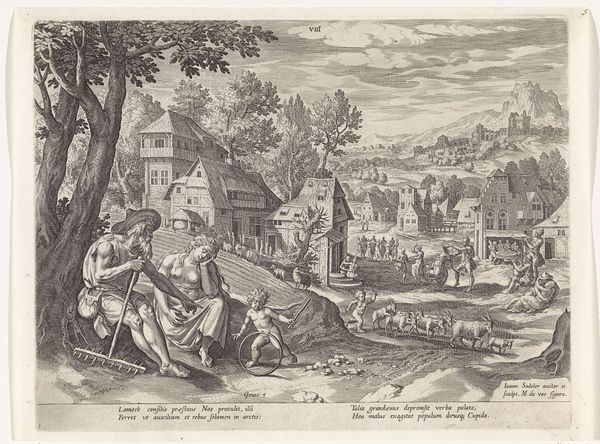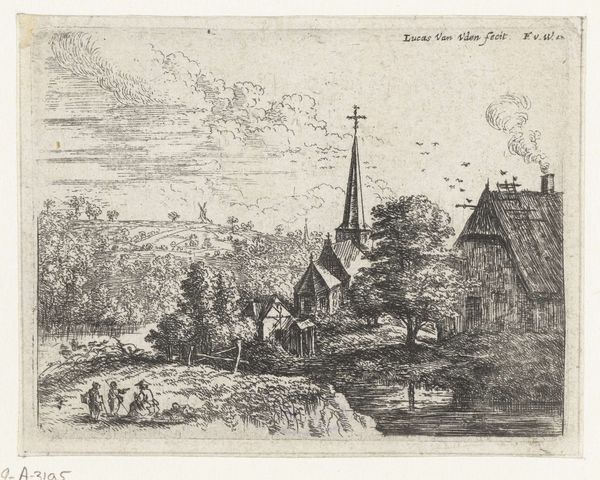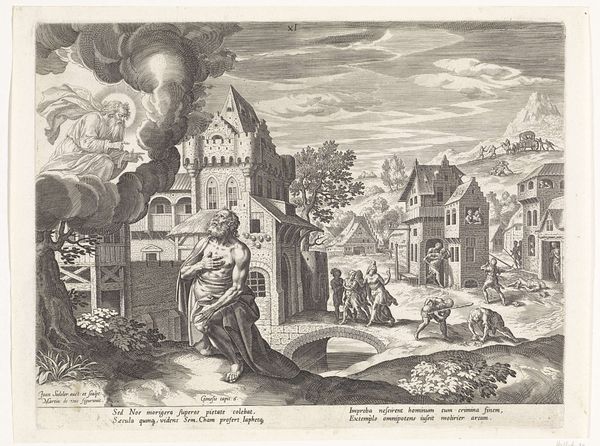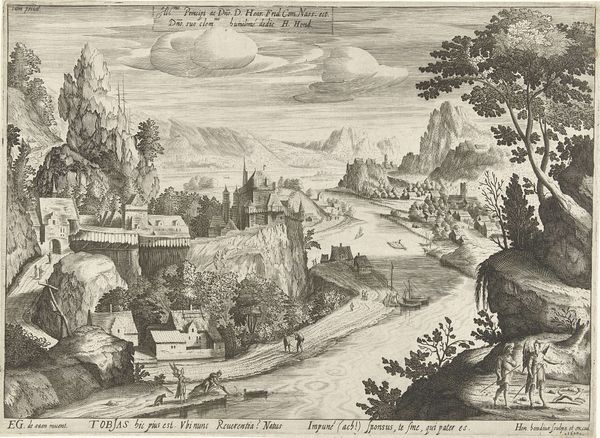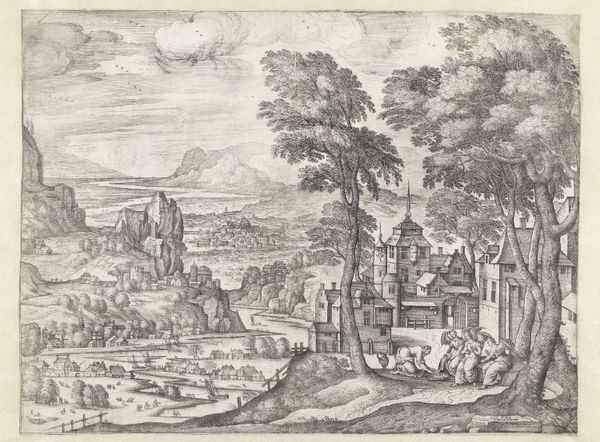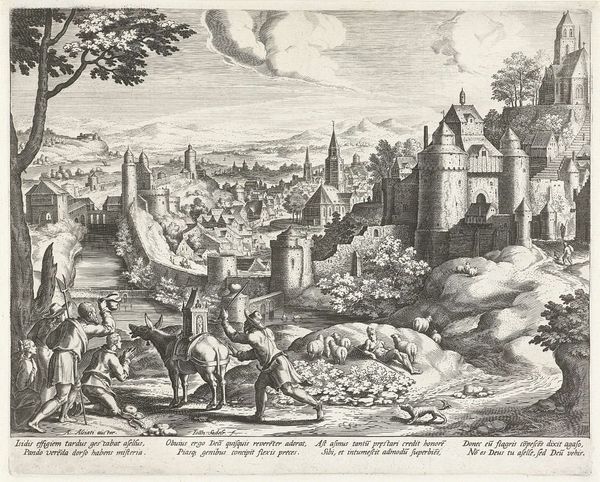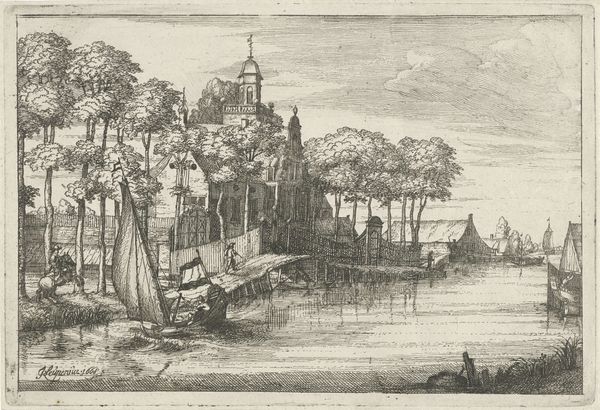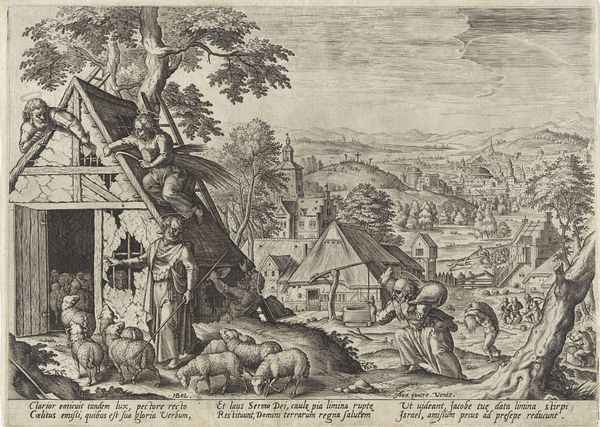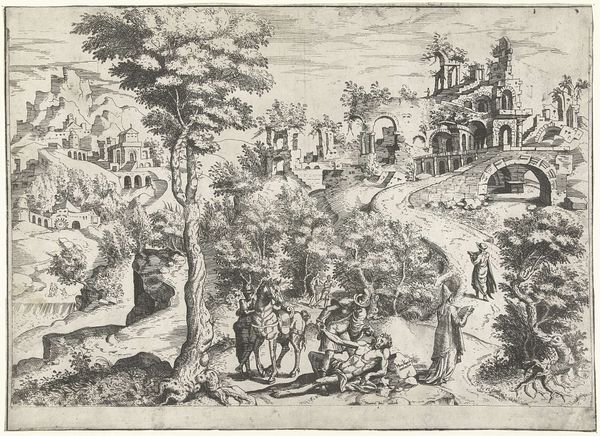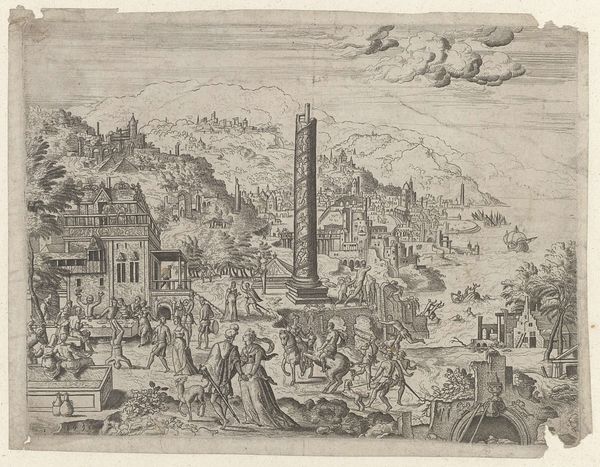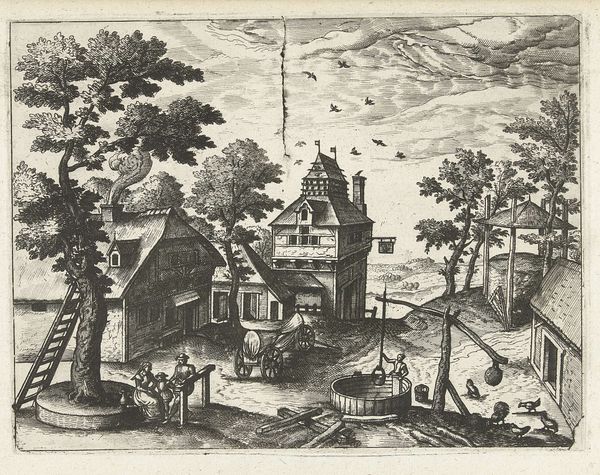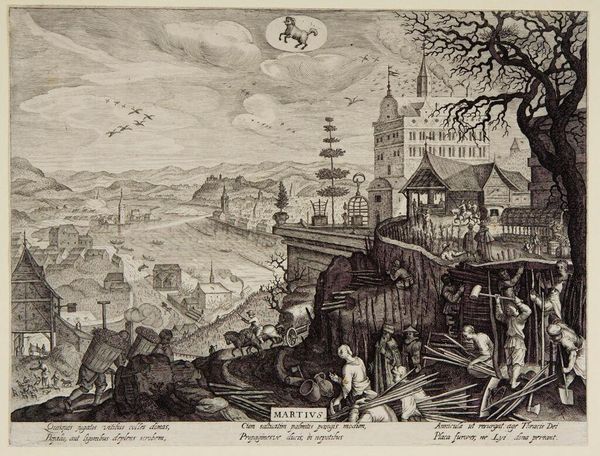
Rouwende mannen op de Portugees-Joodse begraafplaats Beth Haim te Ouderkerk aan de Amstel c. 1675 - 1695
0:00
0:00
print, engraving
#
baroque
# print
#
death
#
landscape
#
history-painting
#
engraving
Dimensions: height 240 mm, width 289 mm
Copyright: Rijks Museum: Open Domain
Curator: Here we have Romeyn de Hooghe’s print, made sometime between 1675 and 1695, titled “Mourning Men at the Portuguese-Jewish Cemetery Beth Haim in Ouderkerk on the Amstel." The engraving portrays a scene of grief and remembrance. What is your initial impression? Editor: Stark, certainly. The composition is dominated by horizontals—tombstones, prone mourners—weighed down, it seems, by sorrow. Note the layering of the etching, creating an intricate, almost claustrophobic sense of depth, with the architecture pressing in on the figures. Curator: Indeed. And consider the symbolic weight of a Jewish cemetery. Death is a universal experience, of course, but funerary rites are always culturally specific. Observe how each figure seems to engage in individualized displays of grief; the postures communicate emotional suffering and spiritual reflection, which varies amongst them.. Editor: I am curious about this variety and the universality of this. Look at the way the light falls. Is it about enlightenment? This visual theme seems to have less weight and impact given that it's at a graveyard! Does it offer the viewer hope during death? Or the possibility of afterlife? Curator: It could represent hope but considering that the scene does takes place in the baroque period where there is lots of tenebrism; that heavy contrast to create drama. I will consider how that style is related to death rather than that style choice offers hope through 'enlightenment'. Do the weeping men have enough faith for resurrection to exist? Editor: But then again, consider that architectural detail in the backdrop—the spire of a Christian church visible. This begs a larger question of faith. Perhaps a comment on tolerance during the Dutch Golden Age or possibly an attempt at reconciliation of symbolism. Curator: Perhaps. Regardless of the intent, the engraving leaves a lingering impression. Its symbolic density, layered with the human drama of mourning, allows us insight into Dutch society during the era. Editor: Precisely. A powerful combination of form and historical context to create lasting art.
Comments
No comments
Be the first to comment and join the conversation on the ultimate creative platform.

